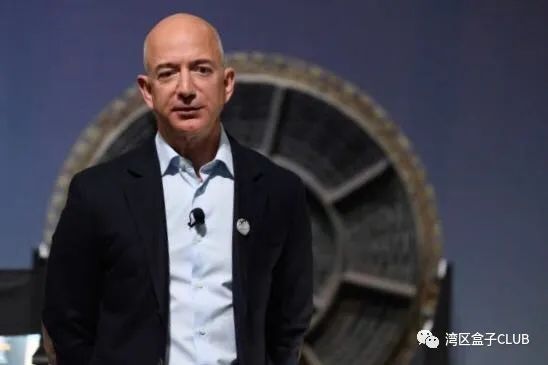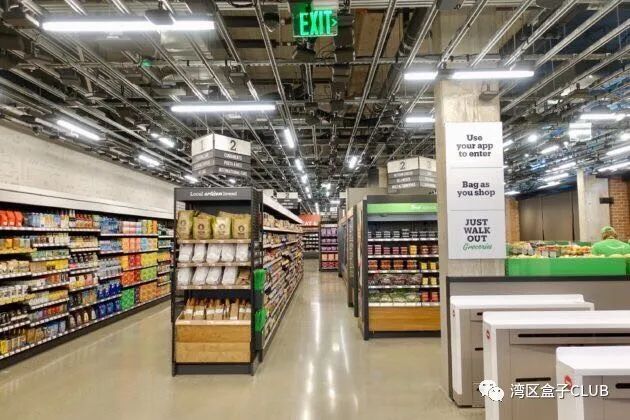The proportion of offline third parties should exceed the proportion of online third parties.
Editor’s note: This article comes from WeChat public account “Bay Area Box CLUB” (ID: BayboxClub) author: XIAOXI.
Just Walk Walk Out, Amazon’s unmanned retail technology, is about to become a big killer for him and Wal-Mart.
Recently, “Amazon six kinds of weapons into line RetailCan Elma still have meals? 》 In this article, we can see that Amazon is very inclined to develop Amazon Go into a grocery store, rather than a simple convenience store. For example, Amazon Go offers a variety of ready-to-eat breakfast, lunch and snack options. AmazonGo Grocery basically includes the most comprehensive grocery SKU, from fresh produce, meat and seafood to baked goods and household essentials, plus easy-to-make dinner semi-finished products. This situation will naturally lead to an increase in customer unit prices.

If you make a horizontal comparison: According to Recode, the light meal brand PretA Manger generated $ 1.1 billion in revenue from 444 stores in 2016, which is equivalent to about $ 2.5 million in sales per store. This number is $ 1 million more than the annual sales of Amazon Go under the first measurement method.
Second, the number of stores opened.
If the 3,000 stores in 2021 are just the beginning, what will Amazon’s subsequent store opening goals be?
As a latecomer and chaser, Amazon is definitely not dominant in absolute numbers. Take Whole Foods, which has been compiled by Amazon as an example. There are about 500 stores in total, which is about one sixth of the total number of Kroger stores.
So if Amazon’s offline terminal is marked with 7-11 (more than 60,000 store terminals worldwide), if Amazon wants to reach one-sixth of 7-11, it is 10,000 stores.
As a result, Amazon can reach 10,000 unmanned retail stores in the future, with an average annual sales of about $ 2.5 million each. In this way, the total annual sales can reach $ 25 billion. As more stores open, the scale effect will continue to increase, and Amazon Go ’s operating margin will rise. It should be able to gradually approach the 5% level of Wal-Mart (NYSE: WMT), and then deduct the relevant tax amount, and finally get 10 Net profit of 100 million US dollars. Well, at this time, if we calculate it at 20 times the price-earnings ratio, Amazon’s valuation of unmanned retail can reach 20 billion US dollars.
If you compare it again, this market value is twice the current market value of Macy’s (NYSE: M).
However, it will not be cheap for Amazon to achieve either of these two results. Because from a cost perspectiveOpening an Amazon Go unmanned retail store is much more expensive than opening a traditional 7-11 store. According to public information, the Amazon store alone has invested more than one million dollars in hardware alone. So Morgan Stanley estimates that it would cost at least $ 3 billion for Amazon to deploy 3,000 Amazon Go stores.
Although Amazon’s cash flow and cash reserves are very amazing today, the high profits of cloud computing can continue to subsidize retail business, but now the global economy is affected by the epidemic, and uncertainty is increasing. In this case, whether Amazon can achieve the goal of 3,000 stores on schedule may require a question mark.

Plug-in empowerment and people’s war
In this case, Bezos wants to establish his own hegemony offline. In addition to opening the store himself, it is even more important to launch the People’s War and rely on Just Walk Out unmanned retail technology. Thousands of traditional retail stores are being pulled into their own digital commercial flywheel.
Just like the domestic Alipay and WeChat payment empowering thousands of small retail stores, Amazon is using unmanned retail technology to empower more retail stores.
Compared with domestic payment enablement, Amazon’s unmanned retail enablement has its own characteristics.
First, save labor costs for offline retail stores.
Previous data show that the annual salary of all cashiers in the United States adds up to about 850.Billion dollars, and the minimum wage will only get higher in the future. In view of this, unmanned retail (even if it can’t be completely unmanned) can indeed save a lot of labor costs for businesses.
Secondly, it deeply embeds the operation process of offline stores and provides various services such as payment.
For Amazon, you can think of this as a plug-in system launched for traditional offline stores (if it is popular in the country, it can also be called a commercial operating system). By implanting into offline stores, the offline stores are directly transformed into Amazon’s third-party sellers. Once implanted, Amazon can continue to provide more services. In addition to the most basic unmanned retail (payment), access to services such as cloud computing, logistics, and supply chain is only a matter of time.
But in addition to the above two advantages, a big problem with Amazon’s unmanned retail technology is that it is too expensive. This million-dollar-level investment is likely to limit this technology to only medium-sized retail / chain stores with a certain size, and the input-output ratio of too small stores will be poor.
So, what kind of revenue can Amazon get from this business? How much income?
First, technology licensing and deployment services.
This is self-explanatory. The problem is only how Amazon and offline merchants agree on the payment method (payment standard? Who pays? Payment ratio? Payment cycle? etc.)
Second, financial settlement channel fees.
The channel fees for financial settlements must be included. The traditional channel rate in the United States is generally 2%. Some people estimate that the Just Walk Out rate, which integrates various technologies, is likely to be higher.
Third, the cost of other services.
As mentioned above, in addition to the most basic unmanned retail (payment), services such as cloud computing, logistics, and supply chain can be successively accessed. These are equivalent to SaaS subscription services in cloud computing. Amazon’s recurring income.
Fourth, extending product services.
It is regrettable that Just Walk Out has too many contacts in the store. Artificial intelligence and cameras will record every customer’s selection, even every hesitation. This Amazon system completely surpasses the traditional consumer behavior research system in terms of authenticity, sample size, and integrity of behaviors. From this, the consumer shopping behavior report that can be counted is definitely a major fast-moving consumer brand High-value data that is willing to spend high prices.
So how much revenue will this business ultimately bring to Amazon? According to RBC Capital’s estimation, the scale of Amazon’s entire unmanned retail business will reach $ 10 billion, of which, self-operated Amazon Go will contribute 4.5 billion, and the remaining 5.5 billion will be mainly derived from Just Walk Out technology’s external licensing (Currently, self-employed and third parties in Amazon e-commerce business(The ratio is around 4: 6).

To sum up, in the current US $ 800 billion grocery market in the United States, Amazon ’s share still has a lot of room for improvement (if online and offline are added together, Amazon ’s revenue in grocery last year reached 200 One hundred million U.S. dollars). According to estimates by venture capital firm Loup Ventures, the unmanned retail market could grow rapidly to $ 50 billion. Amazon expands its unmanned retail technology through self-employed and empowered third parties, and the sales scale brought by it is indeed expected to soon rise to the range of 10 billion to 50 billion US dollars. At the same time, in the capital market, the market value brought by this business is also expected to reach more than 20 billion US dollars.
Of course, even though Amazon has achieved a series of operational goals within its planned time-if you simply compare the grocery market-he is still a lot smaller than Walmart’s $ 270 billion in revenue.
In addition to the push of Amazon as the leader, the global fight against the epidemic now may have become the biggest background to stimulate the accelerated development of unmanned retail.